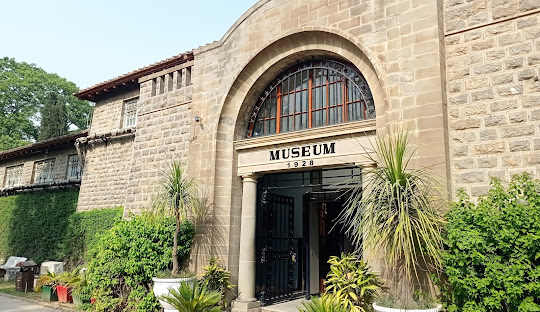
Buddhism took root in Pakistan some 2,300 years ago under the Mauryan king Ashoka, whom Nehru once called “greater than any king or emperor”. Buddhism / Buddhist religion has a long history in the Pakistan region — over time being part of areas within Bactria, the Indo-Greek Kingdom, the Kushan Empire; Ancient India with the Maurya Empire of Ashoka, the Pala Empire; the Punjab region, and Indus River Valley cultures — areas now within the present day nation of Pakistan.
Buddhist scholar Kumāralabdha of the Taxila was comparable to Aryadeva, Aśvaghoṣa and Nagarjuna. The majority of people in Gandhara, present day Southern Khyber Pakhtunkhwa province, were Buddhist. Gandhara was largely Mahayana Buddhist, but also a stronghold of Vajrayana Buddhism. The Swat Valley, known in antiquity as Uddiyana, was a kingdom tributary to Gandhara. There are many archaeological sites from the Buddhist era in Swat. Uddiyana: The Buddhist sage Padmasambhava is said to have been born in a village near the present day town of Chakdara in Lower Dir District, which was then a part of Oddiyana. Padmasambhava is known as Guru Rinpoche in Tibetan and it is he who introduced Vajrayana Buddhism in Tibet. Buddhism was practiced in the Punjab region, with many Buddhist monastery and stupa sites in the Taxila World Heritage Site locale. It was also practiced in the Sindhregions.
Gandhara (IAST: Gandhāra) was an ancient Indo-Aryan civilization centred in present-day north-west Pakistan and north-east Afghanistan. The core of the region of Gandhara was the Peshawar and Swat valleys extending as far east as the Pothohar Plateau in Punjab, though the cultural influence of Greater Gandhara extended westwards into the Kabul valley in Afghanistan, and northwards up to the Karakoram range. The region was a central location for the spread of Buddhism to Central Asia and East Asia with many Chinese Buddhist pilgrims visiting the region.
Between the third century BCE and third century CE, Gāndhārī, a Middle Indo-Aryan language written in the Kharosthi script, acted as the lingua franca of the region and through Buddhism, the language spread as far as China based on Gandhāran Buddhist texts. Famed for its unique Gandharan style of art, the region attained its height from the 1st century to the 5th century CE under the Kushan Empire which had their capital at Puruṣapura, ushering the period known as Pax Kushana.
The history of Gandhara originates with the Gandhara grave culture, characterized by a distinctive burial practice. During the Vedic period Gandhara gained recognition as one of the sixteen Mahajanapadas, or ‘great realms’, within South Asia playing a role in the Kurukshetra War. In the 6th century BCE, King Pukkusāti governed the region and was most notable for defeating the Kingdom of Avanti though Gandhara eventually succumbed as a tributary to the Achaemenids. During the Wars of Alexander the Great, the region was split into two factions with Taxiles, the king of Taxila, allying with Alexander the Great, while the Western Gandharan tribes, exemplified by the Aśvaka around the Swat valley, resisted. Following the Macedonian downfall, Gandhara became part of the Mauryan Empire with Chandragupta Maurya receiving an education in Taxila under Chanakya and later assumed control with his support. Subsequently, Gandhara was successively annexed by the Indo-Greeks, Indo-Scythians, and Indo-Parthians though a regional Gandharan kingdom, known as the Apracharajas, retained governance during this period until the ascent of the Kushan Empire. The zenith of Gandhara’s cultural and political influence transpired during Kushan rule, before succumbing to devastation during the Hunnic Invasions. However, the region experienced a resurgence under the Turk Shahis and Hindu Shahis.
The Pak Tours and Travels having vast experience of dealing and facilitating the Buddhist religious touirsts / piligrims from all over the World.
| Destination | Taxila, Peshawar, Swat |
|---|---|
| Included |
|
| Excluded |
|
| Transportation | Travel by Bus |
| Accomodations | Comfortable stays in Naran and surrounding areas |
| Best Time to Visit | April to October |
BUDDHIST TOURS PROGRAMME Buddhism took root in Pakistan some 2,300 years ago under the Mauryan king Ashoka, whom Nehru once called “greater than any king or emperor”. Buddhism has a long history in the Pakistan region — over time being part of areas within Bactria, the Indo-Greek Kingdom, the Kushan Empire; Ancient India with the Maurya Empire of Ashoka, the Pala Empire; the Punjab region, and Indus River Valley cultures — areas now within the present day nation of Pakistan. Buddhist scholar Kumāralabdha of the Taxila was comparable to Aryadeva, Aśvaghoṣa and Nagarjuna. The majority of people in Gandhara, present day Southern Khyber Pakhtunkhwa province, were Buddhist. Gandhara was largely Mahayana Buddhist, but also a stronghold of Vajrayana Buddhism. The Swat Valley, known in antiquity as Uddiyana, was a kingdom tributary to Gandhara. There are many archaeological sites from the Buddhist era in Swat. Uddiyana: The Buddhist sage Padmasambhava is said to have been born in a village near the present day town of Chakdara in Lower Dir District, which was then a part of Oddiyana. Padmasambhava is known as Guru Rinpoche in Tibetan and it is he who introduced Vajrayana Buddhism in Tibet. Buddhism was practiced in the Punjab region, with many Buddhist monastery and stupa sites in the Taxila World Heritage Site locale. It was also practiced in the Sindhregions. The Pak Tours and Travels having vast experience of dealing and facilitating the Buddhist religious touirsts / piligrims from all over the World.
Write Your Review